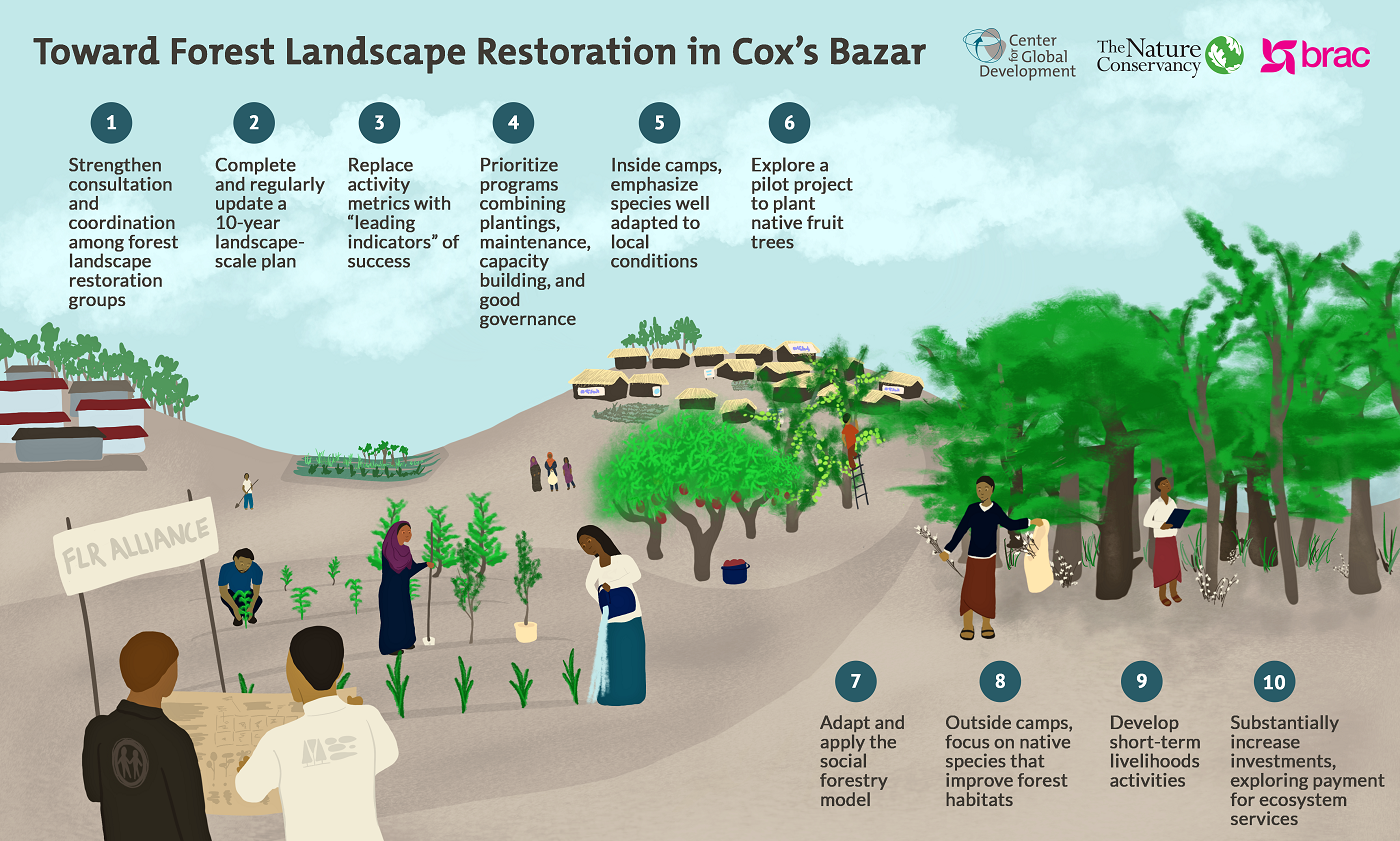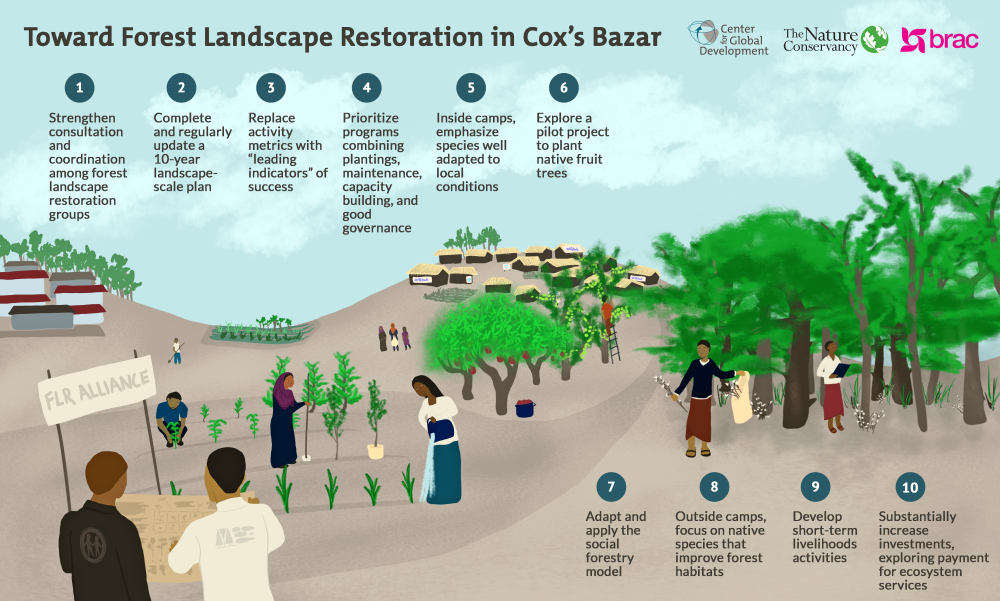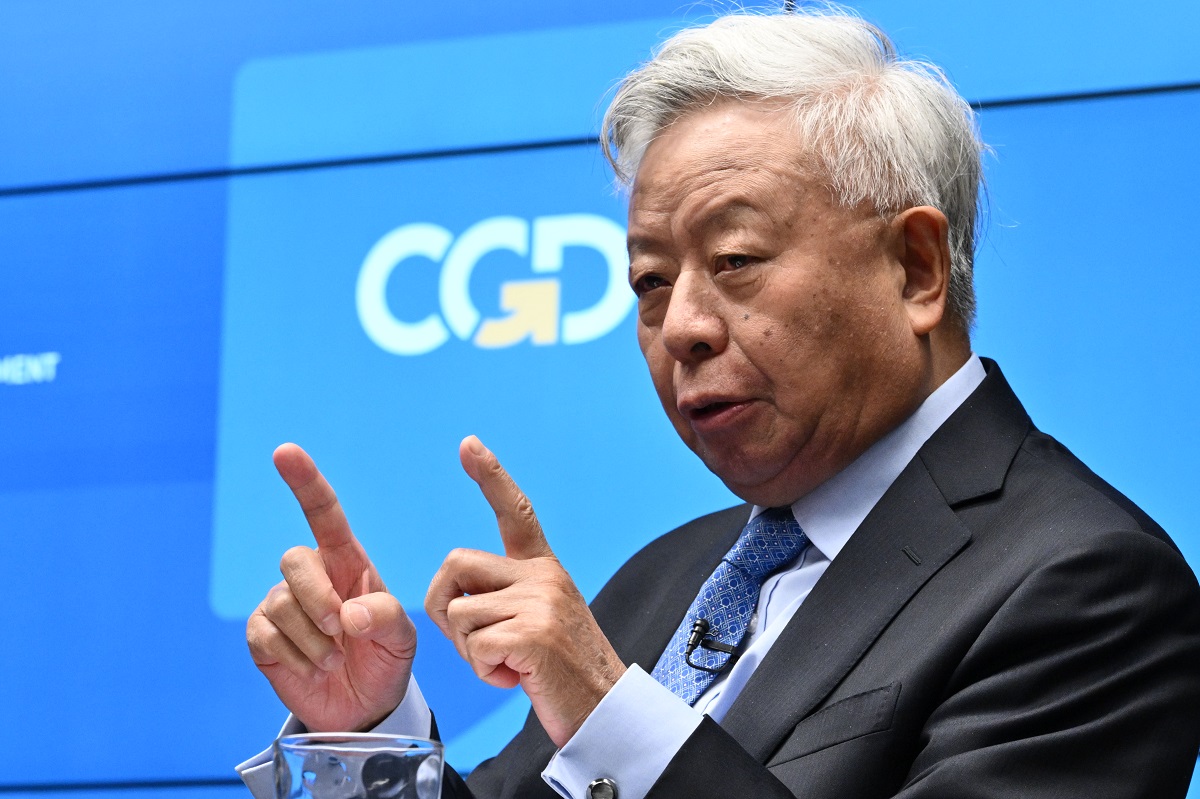Recommended
This week, the global community is meeting in Geneva for the UNHCR Annual Consultations to discuss collaborative, evidence-based approaches to address the rapidly changing global refugee context. Livelihoods and the environment are important themes, and our new case study—which highlights opportunities to make progress on both—is highly relevant to these discussions. We outline 10 recommendations how an environmental response in Cox’s Bazar, Bangladesh can create social benefits and livelihoods opportunities for Rohingya refugees and host communities. These recommendations build on lessons from earlier responses and underscore the need to integrate environmental expertise into initial planning and response.
Since August 2017, over 740,000 Rohingya refugees have fled Myanmar, settling in Cox’s Bazar, Bangladesh. As land was rapidly cleared for shelters, deforestation accelerated. And as is common in humanitarian response, environmental considerations were incorporated secondarily if at all in meeting immediate needs, rather than treating the two as linked. The most obvious impact of this was early reliance of the entire refugee community on fuelwood harvested from the surrounding forest.
Between 2016 and 2018, the demand for fuelwood increased dramatically, from 54,451 tons per year to 312,807 tons per year. Between 2016 and 2017 there was an estimated loss of 18 percent of the forest coverage (2,060 hectares) in the areas around Kutupalong-Bulukhali where most refugees settled. These environmental losses have led to a second crisis: fuelwood shortages that have strained refugees and their relationships with host communities. While agencies are now providing liquified petroleum gas to refugee and host communities, this reached scale only after devastating levels of deforestation.
To address these impacts, CGD, the Nature Conservancy, and BRAC launched a joint effort in January 2018. Using a new model called Refugee Action for People and the Planet (RAPP labs), this project brought together seasoned environmental experts with humanitarian and development actors, including FAO and UNHCR. Importantly, as in the case of our project in Bangladesh, these local and international experts provided additional capacity to complement and support ongoing efforts. In other crises, which are generally less severe in scope and scale, we anticipate even more space for the earlier inclusion of environment experts and implementation of best practices.
RAPP labs identified lessons and recommendations to improve forest landscape restoration (FLR) in Cox’s Bazar. FLR is a commonly used environmental solution that also improves livelihoods: it covers a suite of methods that help reshape highly deforested landscapes in ways that offer multiple benefits, better meeting present and future needs for people and nature.
Top recommendations include:
-
Promote stakeholder coordination and planning. Experiences around the world show that large-scale forest restoration only works if stakeholders are coordinated from the beginning. Some coordination is already happening in Cox’s Bazar, but more is needed, including with actors who manage forests, roads, and other aspects of development outside the camps. Increased coordination of FLR should be managed through the Environmental Technical Working Group (EETWG), which should consider developing a standing alliance for FLR over time. A 10-year plan for FLR should also be created to ensure alignment and coordination across actors and sectors.
-
Create outcome-based goals and objectives and strong maintenance and governance arrangements. Program design is not effective without clear goals and objectives for tree planting outcomes—and must be paired with robust plans for maintenance and strong governance. In order to improve seedling survival both inside and outside camps, we recommend that actors replace activity metrics (such as area planted, number of seedlings planted or distributed, number of projects) with “leading indicators” of success (such as percent or number of seedlings surviving, seedling growth, soil erosion, or percent population engaged in maintenance activities). To improve the likelihood of seedling survival and strengthen local community capacity, programs that combine plantings, maintenance, capacity building, and good governance arrangements should be prioritized. Maintenance activities can also provide opportunities for work, and strong governance is instrumental in ensuring that livelihood benefits are shared fairly within and between communities.
-
Plant species that promote climate and nutrition benefits. Sitting on the coast, Cox’s Bazar is vulnerable to cyclones and other storms that are increasing in frequency and intensity with climate change. Experience in other cyclone-prone regions has shown that some popular reforestation species are highly susceptible to tree fall and death during the high winds of cyclones, while locally or regionally adapted species survive by dropping their leaves during high winds and re-growing them afterwards. We recommend planting a diverse species mix that emphasizes fast growing native species well-adapted to local conditions. Given shortages of fruits and vegetables, pilot projects which plant native fruit trees inside camps can potentially provide nutritional benefits.
-
Use the social forestry model to improve sustainable livelihoods. Given the reliance of local communities and refugees on forest products—including fuelwood and seedling supplies—long-term planning for sustainable livelihoods is needed. Outside of camps, an existing approach called social forestry can be used. This approach to forest management has been used in Bangladesh to increase economic, ecological, and social benefits especially to the rural poor. Here too, use of a diverse species mix will yield the best results for site capture and stabilization. Improving local nurseries as part of this effort can also support local livelihoods and the forest habitat.
-
Invest in FLR. Without sustained long-term funding, FLR will not be feasible. Humanitarian funding is likely to decline in the near future as global attention shifts to the next crisis. Therefore, the international community, in partnership with the Government of Bangladesh, should begin dialogue and strategies for mobilizing new funding for FLR in Cox’s Bazar. We recommend that investment in FLR be increased substantially in order to optimize potential benefits, including by exploring payment for ecosystem services, which is a livelihood generation approach. The more financial investment that there is in FLR, the more potential livelihoods opportunities there will be for refugees and hosts.
Encouragingly, we have seen aspects of these recommendations reflected in new planning documents. For example, we understand that the three species lists approved by the Bangladesh Forest Department for 2019 EETWG’s 2019 species list includes all native species, and that leading indicators have been included for species planting and maintenance. We hope that these recommendations lead to the adoption of best practices by all actors and strategic, long-term FLR efforts in Cox’s Bazar. Refugee and host community livelihoods depend on it.
What we saw in Bangladesh is the result of a failure that is as common as it is understandable: the urgency of humanitarian response led to deprioritization of environmental concerns, which often remain secondary even as the immediate crisis phase passes. Given the reality of protracted displacement, this is a false dichotomy as environmental impacts can quickly lead to resource stress and conflicts. As our partners at BRAC reflect, we hope our analysis and recommendations can be of use at both project and planning levels moving forward:
BRAC can use this policy paper in formulation and design of a project concept for capacity building of local nursery owner in producing native plant saplings… The policy paper will play vital role in designing long term project proposal aiming to achieve sustainability of restoration of degraded forest and forest land, land stabilization, bio-diversity conservation and livelihood support for forest dependent local community program.
We encourage this week’s consultations to consider practical ways that humanitarian response can embrace the interconnected reality reflected in the daily lives of refugees, as well as in the Sustainable Development Goals. For example, initial response teams could include an environmental expert who can make near-term, cost-effective suggestions for avoiding environmental harms that quickly impact refugees and hosts. In addition, major improvements for refugees, hosts, and the environment could be made by planning for sustainable energy supplies in the initial response. Our recommendations above will be relevant to responses beyond Cox’s Bazar, but the greatest benefits to the environment and livelihoods will come from avoiding environmental harms in the first place.
Disclaimer
CGD blog posts reflect the views of the authors, drawing on prior research and experience in their areas of expertise. CGD is a nonpartisan, independent organization and does not take institutional positions.
Image credit for social media/web: DFID/Flickr






